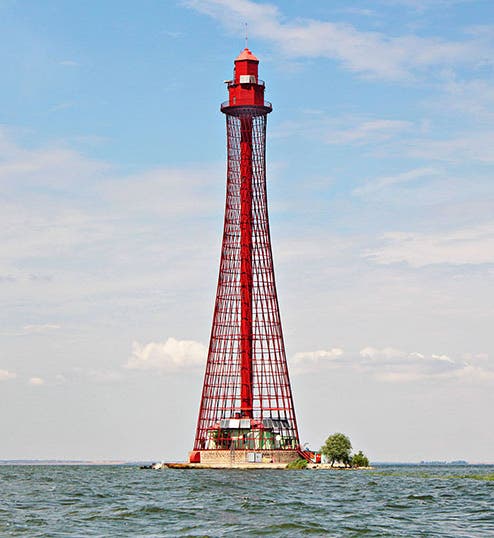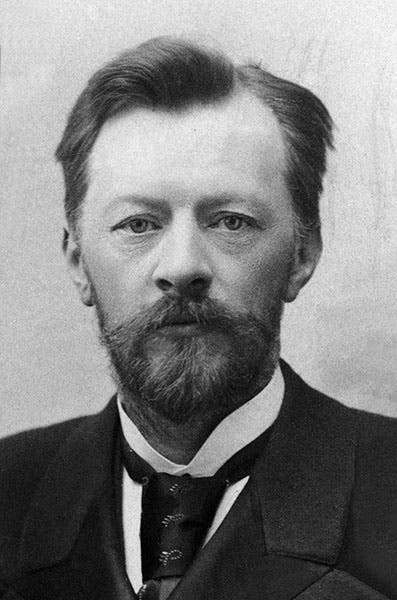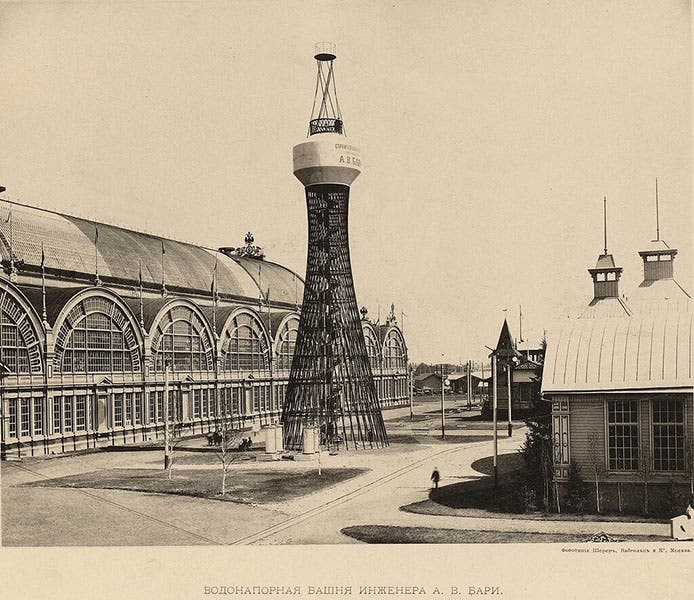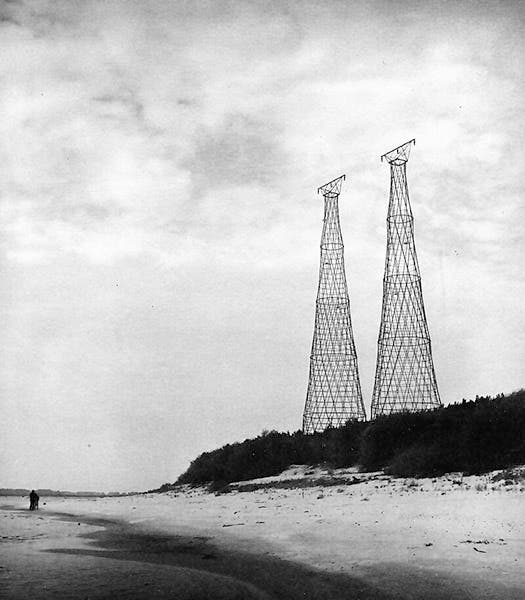Scientist of the Day - Vladimir Shukhov
Vladimir Grigoryevich Shukhov, a Russian structural engineer, was born Aug. 28, 1853. Shukhov was an amazingly innovative and prolific engineer, having a profound grasp of math and geometry that allowed him to invent structures of great ingenuity, such as thin-roof pavilions based on double-curvature structural support. He also built more ordinary things, such as oil pipelines, water supply networks, oil tankers, and bridges – he constructed some 180 bridges across the Volga, Dnieper and other rivers in Russia, when he wasn’t otherwise engaged.
Today, we are going to discuss his invention of the hyperboloid of revolution and its use by Shukhov in designing and building towers of all sorts. Shukhov discovered that you can use straight iron or steel structural members to produce an inward curving column, broad at the base and top, and narrow in the middle, which could support much more weight with less material than a conventional straight structure, making it the perfect design for something with a large mass at the top, such as a water tower. He built his first hyperboloid tower for the All-Russia Industrial and Art Exhibition, which opened in Nizhny Novgorod in central Russia in 1896 (the same exposition for which he built his first double-curvature thin-roof pavilions). I think this tower still stands, although we show a period photo here (third image). Eventually, Shukhov constructed some 300 hyperboloid water towers throughout Russia (and outside Russia), of which many survive. We show one other, chosen at random, because it is an attractive photograph (fourth image).
Shukhov also applied his hyperboloid design to lighthouses. One of his most famous structures is the Adziogol Lighthouse, a lattice hyperboloid tower that is some 70 meters tall and sits on the Dneiper Estuary in the Ukraine (first image). This is one of the most beautiful of all lighthouses and completely different from any other lighthouse constructed before it. It was completed in 1911. Multiple sources say that the Adziogol Lighthouse was struck by 3 Russian rockets at the outbreak of the current conflict in Ukraine in 2022, but, amazingly, no one has published a photo to show what if any damage was inflicted by the attack. I really hope that this iconic structure survives the war and, if damaged, can be repaired. Fortunately, there is a miniature version just half its size not too far away, called the Front Light. But it does not look nearly as regal as the Rear Light.
Shukhov's other famous structure is the Shukhov Tower in Moscow, a broadcasting tower that is 160 meters tall and was completed in 1922. I do not like it as much as the lighthouse, because it consists of several hyperboloids stacked atop on another, so it doesn’t have the unified elegance of the single-structure towers, at least in my opinion. You can read about the Shukhov Tower and see photos on Wikipedia. I thought here we could look instead at two of the Shukhov electrical transmission towers that Shukhov constructed in 1929 to carry high-voltage power lines across the Oka River in Nizhniy Novgorod Oblast in central Russia. There were originally 6 of them, three pairs of different heights, with one pair being 128 meters tall. When the power lines were rerouted in 1989, the four smaller towers were taken down, with the two tall ones left standing as a Shukhov monument (fifth image). Unbelievably, one of the towers was "illegally demolished" in 2005, taken down to salvage its steel, leaving only the one still standing. I hope they watch over it better now than they did in the past.
Shukhov died in 1939 at the age of 85, one of the most ingenious and original structural engineers in Russian history. There is a statue of Shukhov in Moscow (sixth image)
William B. Ashworth, Jr., Consultant for the History of Science, Linda Hall Library and Associate Professor emeritus, Department of History, University of Missouri-Kansas City. Comments or corrections are welcome; please direct to ashworthw@umkc.edu.












